Sign In | Starter Of The Day | Tablesmaster | Fun Maths | Maths Map | Topics | More
This is the Transum Newsletter for the month of August 2023 and what better way to start than with the puzzle of the month.
The average (mean) age of the four Calamity cousins is 20.
The average (mean) age of the two youngest cousins is 14.
The average (mean) age of the two cousins who each have both younger and older cousins is 18.
The second youngest is half the age of the oldest. What is the range of their ages?

Let me know your solution - The answer will be in next month's newsletter.
A new level has been added to the Multi-Step exercises. These are the exercises containing questions requiring students to decide the operations and methods needed to arrive at the solutions. The questions are set in real-world contexts.
Four new mathematical simulations/manipulatives were added to the Transum website this last month. They are all from an organisation called PhET (Physics Educational Technology) and are really very good. Unlike the PhET activities that were already on the site, these are for the older student.
Centre and Variability: Make sense of and determine the reasonableness of the mean and median of a data set by looking at the distance footballs have been kicked.
Trig Tour: Here you can see a dynamic unit circle linked to a standard trig graph helping students get a feel for trig functions for negative angles and angles greater than 90 degrees.
Calculus Grapher: Given a function, predict the integral, first derivative, or second derivative curves in real time.
Graphing Quadratics: Describe how changing the coefficients of a quadratic function changes the graph of the function.
For those teachers enjoying their summer holiday (apologies to those who aren't), I have put together a list of four activities to enhance your leisure time, whether you're basking in the comfort of your own back garden or enduring a lengthy flight. These four selected activities may be novel experiences for you, but given your current relaxed state, I believe you'll find them delightful:
Equatero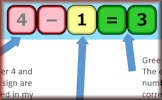 |
Ultimate OXO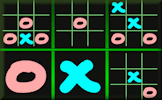 |
The Rowcol Game |
Boxed In Numbers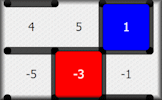 |
In addition, if you are in the lucky 50% of Transum users who are on holiday and are brave enough to send your students a mid holiday email ... here is the link to my holiday activities: School Holiday Activities.
At the very beginning of last month I went to the cinema to see the latest blockbuster called "Indiana Jones and the Dial of Destiny". I can happily report that the word Mathematics was mentioned in the film more times than all of the other school subjects put together! Hurrah for us Maths teachers.
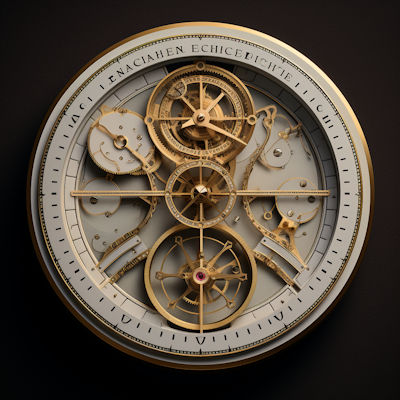
An artificial intelligence created image of what an Archimedes Dial might look like.
For the two weeks in the middle of the month I was on holiday by the sea (holiday snap below) and I spent a lot of time watching the waves and the changing tides. I tried to work out whether every seventh wave was bigger and then I suddenly remembered something I had learned in the Sea Scouts; an application of fractions in real life.
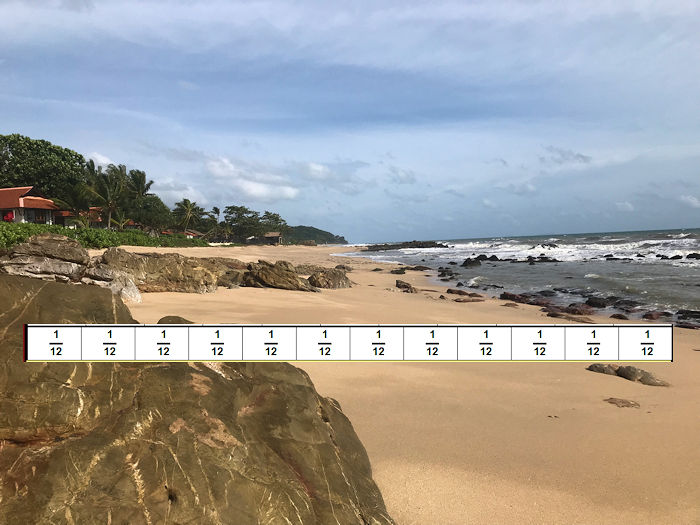
The "twelfths rule" or "rule of twelfths" is a rough estimation method used to calculate the height of the tide at a specific time during a tide cycle. According to this rule, the tidal range is divided into twelve parts, with the water level rising or falling in a somewhat predictable manner. The progression of the tide is divided into equal time intervals, with the first hour covering 1/12th of the tidal range, the second hour covering an additional 2/12th (totaling 3/12th), the third hour covering 3/12th more (totaling 6/12th or 1/2). The pattern is then reversed with three more twelfths in the fourth hour followed the 2/12th and 1/12th in the last two hours.
So if the tide is three quarters of the way in how long will it be till high tide?

Am I typical of Maths teachers on holiday - or am I'm the only one to bring fractions on to the beach? I then used my outstretched hand to work out the time while taking photos of the beautiful red sky. The hand rule suggests that each hand width (from the bottom of the palm to the top of the extended fingers) above the horizon corresponds to approximately one hour until sunset.

Just an excuse for me to show off the sunset photos I took on holiday
Now my monthly experiment with ChatGPT, my favourite artificial intelligence tool. I typed in the following:
I always end my monthly email newsletter to my subscribers with a witty postscript. Can you make a suggestion as to what my next newsletter's postscript will be given that the last five were:
"What do you need to calculate the distance around a circle of sheep? Answer: Shepherds’ Pi."
"Always wear glasses to Maths lessons. They help with division!"
"I begin this month absolutely exhausted as I've just completed a 31 day March!"
"If a got a pound for every time I failed a maths exam I'd have about £9.30 now."
"Calendars, their days are numbered."
There was a dramatic pause then it came back to me with:
"Remember folks, even though it's summertime, don't forget to carry the one when calculating how many ice cream cones you can eat!"
What? I think my job is safe. That's what you call extrapolating on a small data set.
Finally the answer to last month's puzzle which was If x and y are positive integers and x+xy+y = 90, what is the sum of x and y?
Here is my solution:
x(1+y) + y = 90
x(1+y) + y + 1 = 91
(x+1)(y+1) = 91
The only pairs of positive numbers with a product of 91 are 1 and 91 or 7 and 13.
The first option would give a value of 0 for either x or y so is not a valid solution.
So one possibility gives x+1 = 7 and y+1 = 13
Adding these two equations x + y + 2 = 20
So the sum of x and y; x + y = 18.
The first five correct answers came in from Chris Smith, Martin Wright, Mandy Fox, Wil Ransome and Pauline Johnson.
The puzzle was adapted from an old Math Olympiad Question.
That's all for now,
John
PS: Why is a dog with a bad foot like adding 6 and 7?
A. Because he puts down three and carries the one.
Do you have any comments? It is always useful to receive feedback on this newsletter and the resources on this website so that they can be made even more useful for those learning Mathematics anywhere in the world. Click here to enter your comments.
Did you know you can follow this newsletter on Substack completely free of charge? Please note this is separate from a paid subscription to the Transum website, which unlocks a much wider range of premium resources.